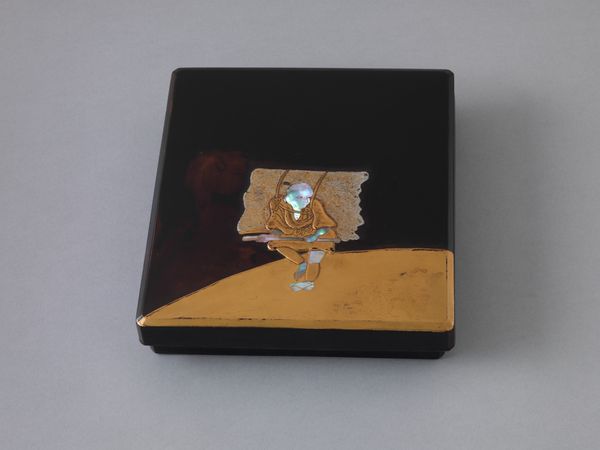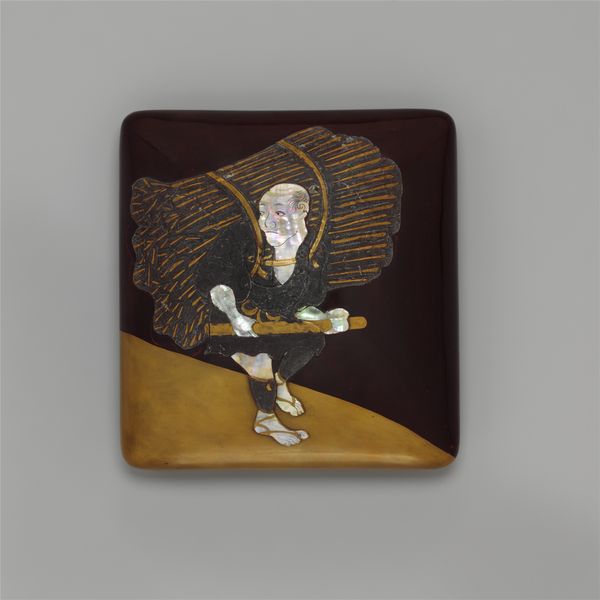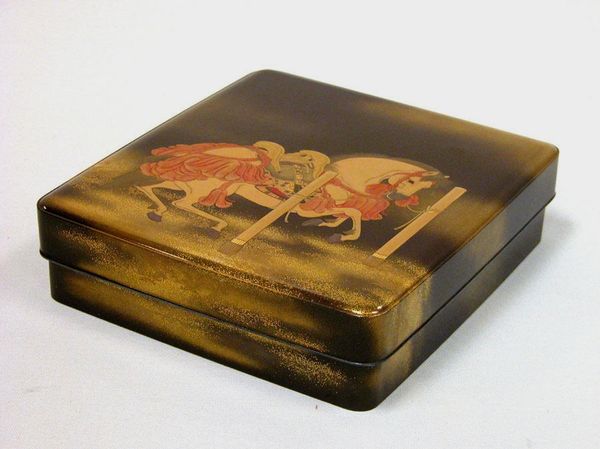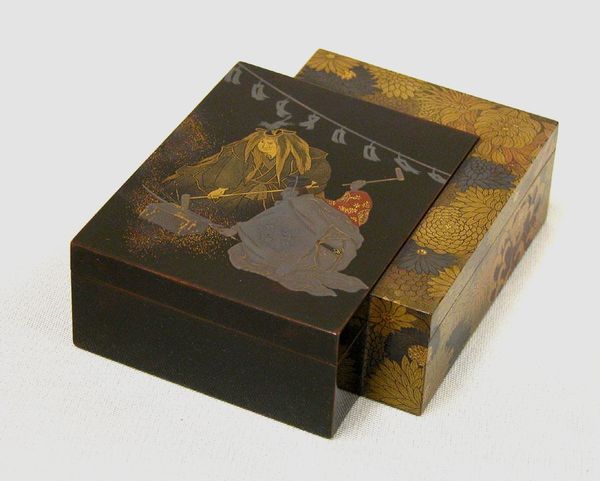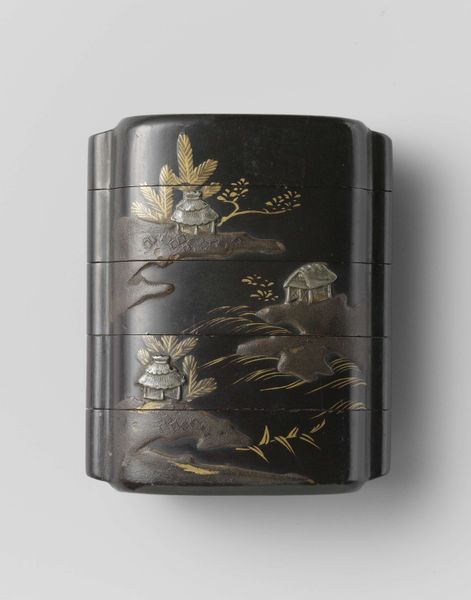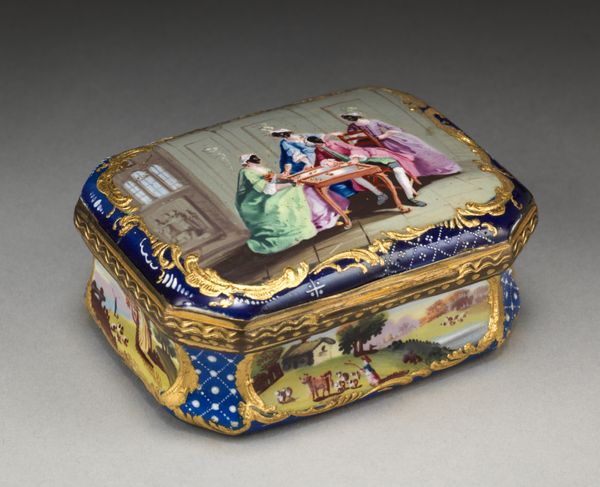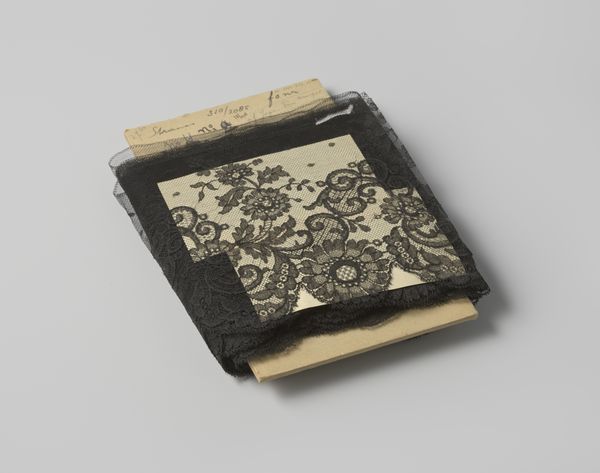
carving, wood
#
carving
#
narrative-art
#
asian-art
#
ukiyo-e
#
figuration
#
orientalism
#
wood
#
miniature
Dimensions: H. 1 7/8 in. (4.8 cm); W. 8 3/4 in. (22.2 cm); L. 9 1/2 in. (24.1 cm)
Copyright: Public Domain
Curator: What a charming piece! We're looking at a 19th-century writing box crafted in the style of Ogata Kōrin. You can find it here at the Metropolitan Museum of Art. Editor: The first thing that strikes me is the materiality of the wood itself, that contrast between the smooth lacquer and the roughly textured load carried by the figure. And the figure itself is really striking with all those pieces of shell. It immediately makes me think about the labor involved in its creation and the potential purpose of that labor. Curator: Indeed, the materials speak volumes. The choice of wood, the precise carving, they reflect the value placed on writing implements within that era. Think of the rise of the merchant class, demanding ever more ornate and personalized goods. Writing, once the domain of the aristocracy and scholars, became increasingly accessible. Editor: Exactly. This isn't just about aesthetics; it's about access and changing social dynamics. And those minute details in the carving show a real dedication. Each piece must have taken painstaking work, from sourcing the right materials, carving, lacquering to even that shell work to capture and highlight the labor and even burden of this character. Curator: The woodcutter motif itself adds another layer. It grounds this box in the daily lives of ordinary people. Though inspired by the famous artist Ogata Kōrin who would typically produce pieces for wealthier families and shogunates, we still see the intersection of different cultures during that time and its adoption by multiple echelons. What could it say about idealized rural labor or the consumer’s self-identification with simpler virtues? Editor: Or, consider how such an image served the user. Did it inspire or offer a false sense of comfort within an emerging industrial market, maybe by placing his luxury next to a commoner? It presents an interesting commentary to its user—a space of reflection and even narrative that transcends class barriers through design. Curator: A thought-provoking piece that connects deeply with its time. A glimpse into evolving social classes and aesthetic sensibilities. Editor: Absolutely! And an example of the cultural and material values literally embedded within the artwork.
Comments
No comments
Be the first to comment and join the conversation on the ultimate creative platform.

